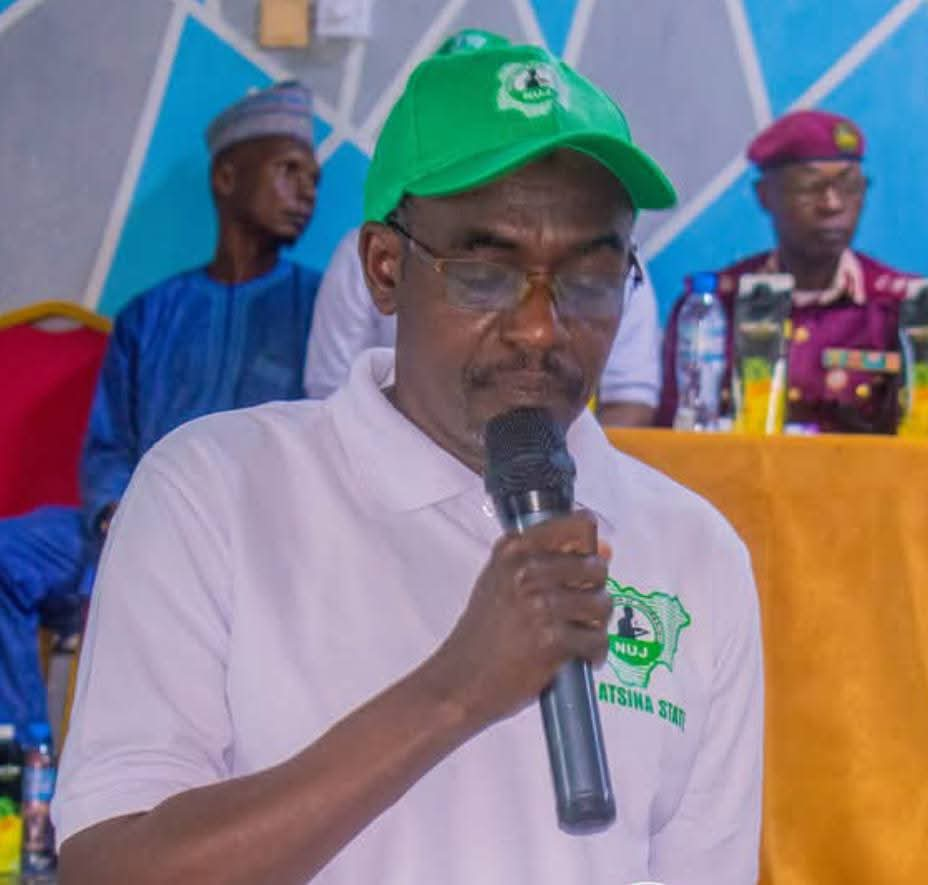- NUJ@70: Yar’adua Ya Yi Kira da a Kiyayi Barazanar Kafofin Sadarwa na Zamani, Ya Yabi Gudunmuwar 'Yan Jarida
- NUJ @70: Dr. Balarabe Highlights NUJ’s Historical Journey, Modern Challenges Facing Nigerian Journalists
- NUJ @70: Dr Sama'ila Balarabe Ya Gabatar da Lakca Kan Tarihi da Kalubalen ’Yan Jarida a Najeriya
NUJ @70: Dr. Balarabe Highlights NUJ’s Historical Journey, Modern Challenges Facing Nigerian Journalists

NUJ @70: Dr. Balarabe Highlights NUJ’s Historical Journey, Modern Challenges Facing Nigerian Journalists
By Zaharaddeen Ishaq Abubakar | Katsina TIMES
As part of activities marking the 70th anniversary of the Nigeria Union of Journalists (NUJ), Dr. Sama’ila Balarabe of the Hassan Usman Katsina Polytechnic delivered a compelling lecture chronicling the union’s evolution and the challenges confronting journalism in Nigeria.
Presenting his paper titled “NUJ at 70: A Historical Review” on 17th June 2025 at the Hayatt Regency Suite, Katsina, Dr. Balarabe outlined five key phases in the NUJ’s development, from its colonial-era inception to the digital age.
Phase One: Founding Era (1955–1960)
Dr. Balarabe traced the NUJ’s birth to March 1955 in Lagos, during colonial rule. He noted that young nationalist journalists established the union to defend press freedom and national development. He cited newspapers such as the West African Pilot, Daily Times, and Nigerian Tribune as critical voices in the independence struggle.
Phase Two: Post-Independence Nation Building (1960s–1970s)
Following Nigeria’s independence, NUJ intensified public enlightenment and efforts to foster national unity. However, this era also experienced political instability, ethnic and religious divisions, and state interference in press activities.
Phase Three: Suppression Under Military Rule (1970s–1999)
Dr. Balarabe highlighted the heavy-handed censorship of the press during military regimes. Decrees such as Decree 3 (1967) and Decree 4 (1984) — enacted during General Muhammadu Buhari’s rule — criminalized truthful reporting. He recalled the detention of journalists like Tunde Thompson and Nduka Irabor for publishing factual reports deemed offensive by the regime.
Phase Four: Democratic Era (1999–2015)
With the return to civilian rule in 1999, the NUJ regained its voice, advocating for press freedom and professional training. The passage of the Freedom of Information Act in 2011 was a major milestone. Still, journalists grappled with poor remuneration, political pressure, lack of equipment, and threats to safety—particularly during elections and conflicts.
Phase Five: The Digital Age and New Threats (2015–Present)
In the present era, Dr. Balarabe noted that digital technologies and social media have transformed journalism. However, these tools also introduce new challenges such as misinformation, fake news, cyberbullying, and the declining credibility of information.
Leadership and Legacy
Dr. Balarabe listed several past leaders of the NUJ at both national and state levels. The first national president was Mogolaji Obunu (1955–1959), followed by leaders like Ebun Adeseye, Larry Obunbite, and current president Chris Isiguzo. In Katsina, the pioneer state chairman post-1987 was Hafiz Ahmed, followed by others, up to the present chairman, Mannir Dan Ali.
In conclusion, Dr. Balarabe emphasised NUJ’s crucial role in Nigeria’s democratic development. He called on government and stakeholders to improve journalists’ welfare, provide modern tools, and invest in continuous training to enable the press to fulfill its responsibilities.
“Journalism is a struggle,” he stated. “No strong democracy can thrive without freedom of expression and the welfare of journalists.”

